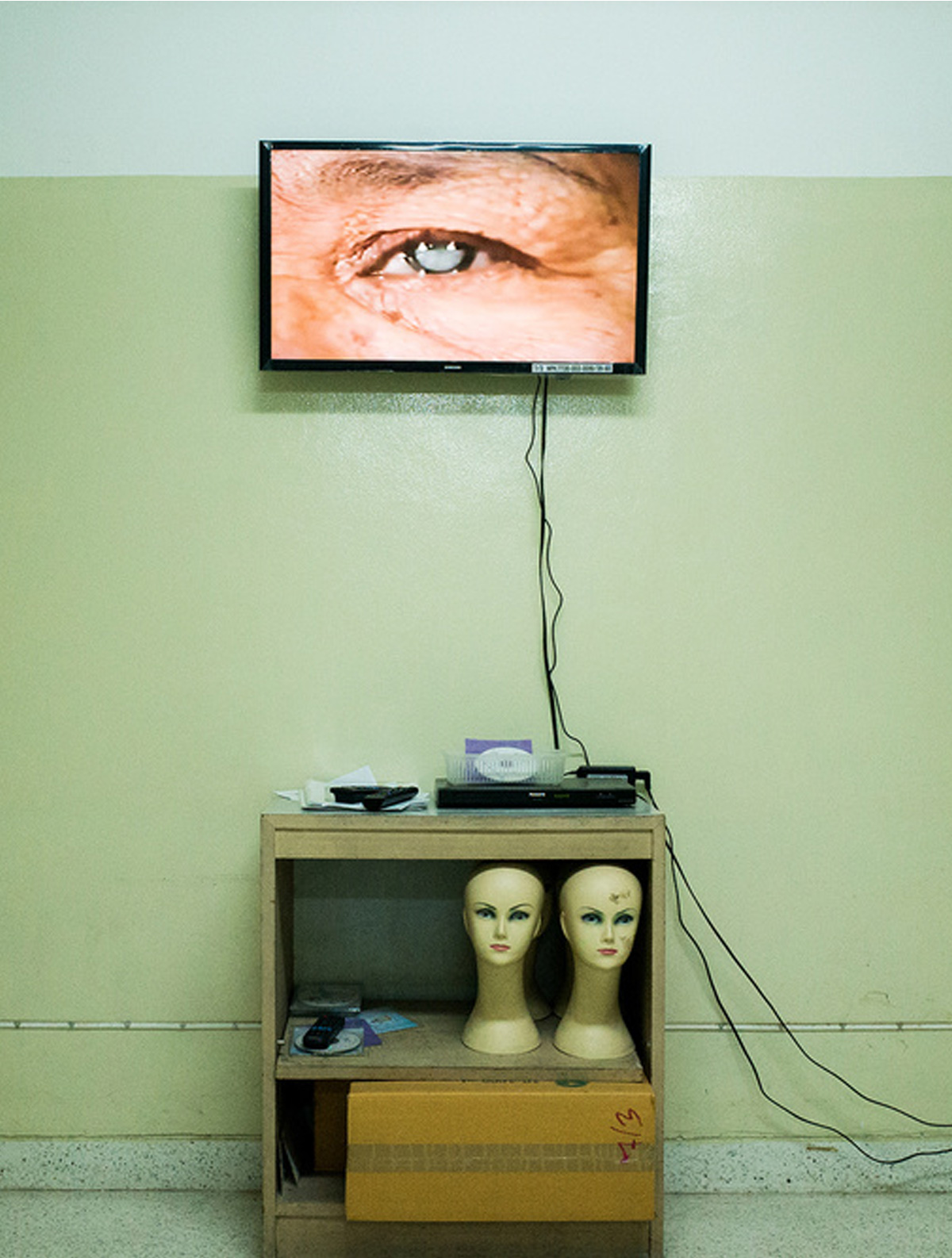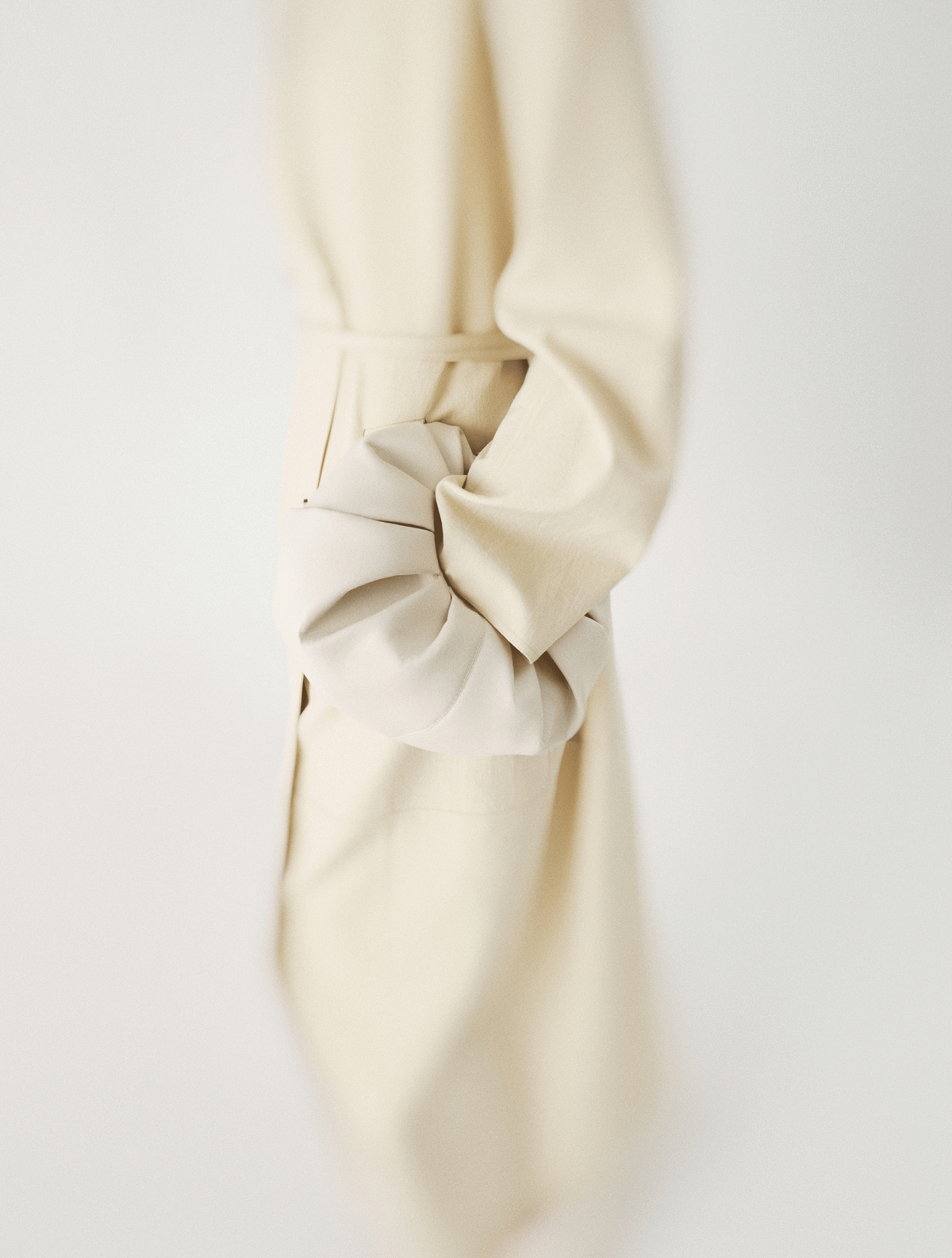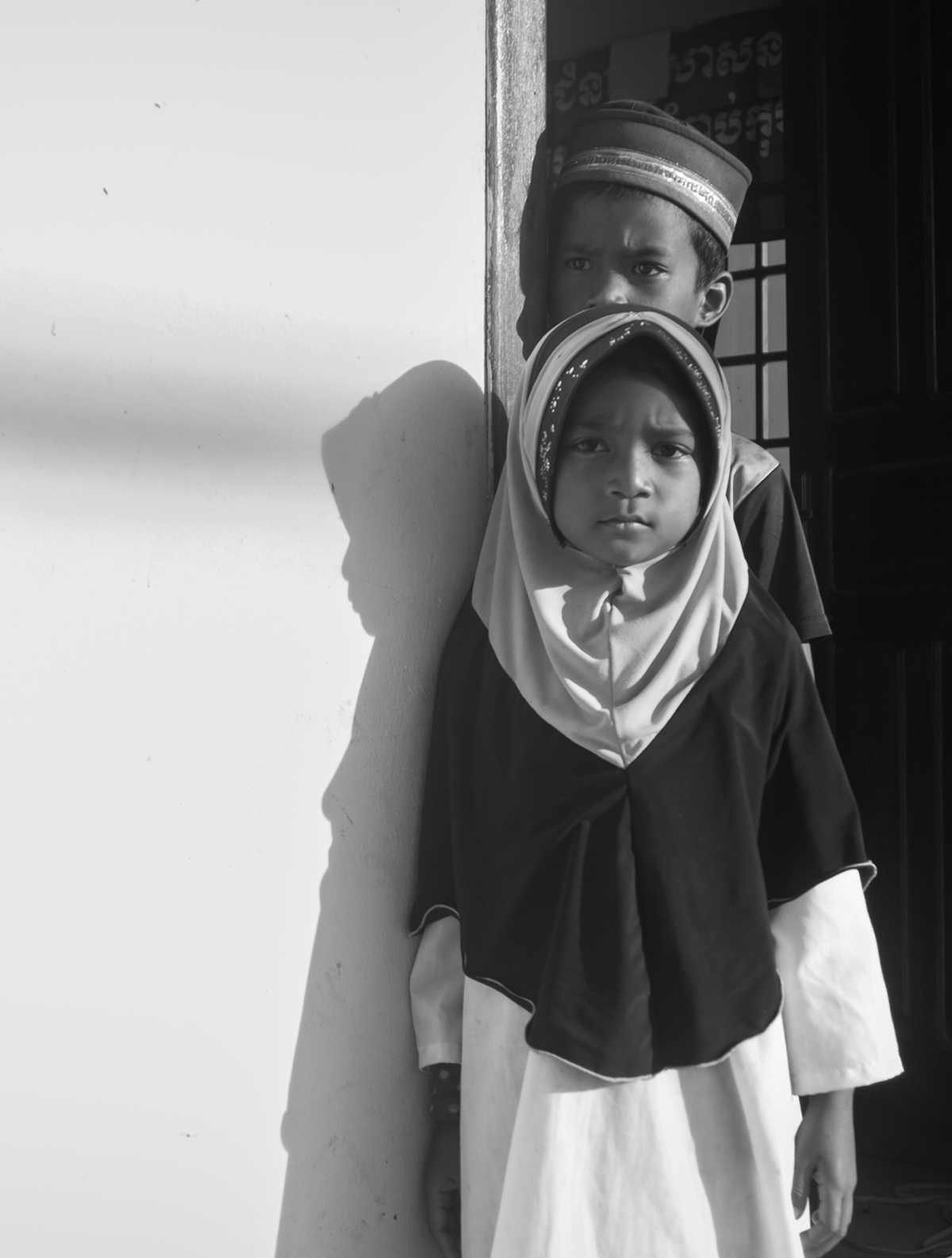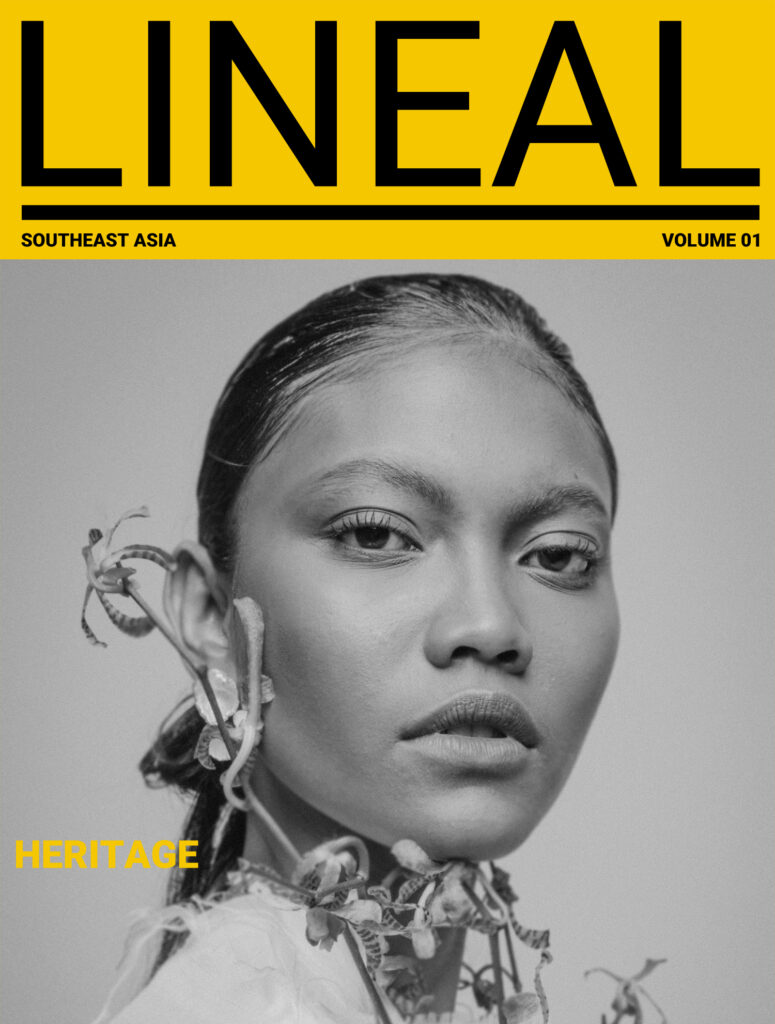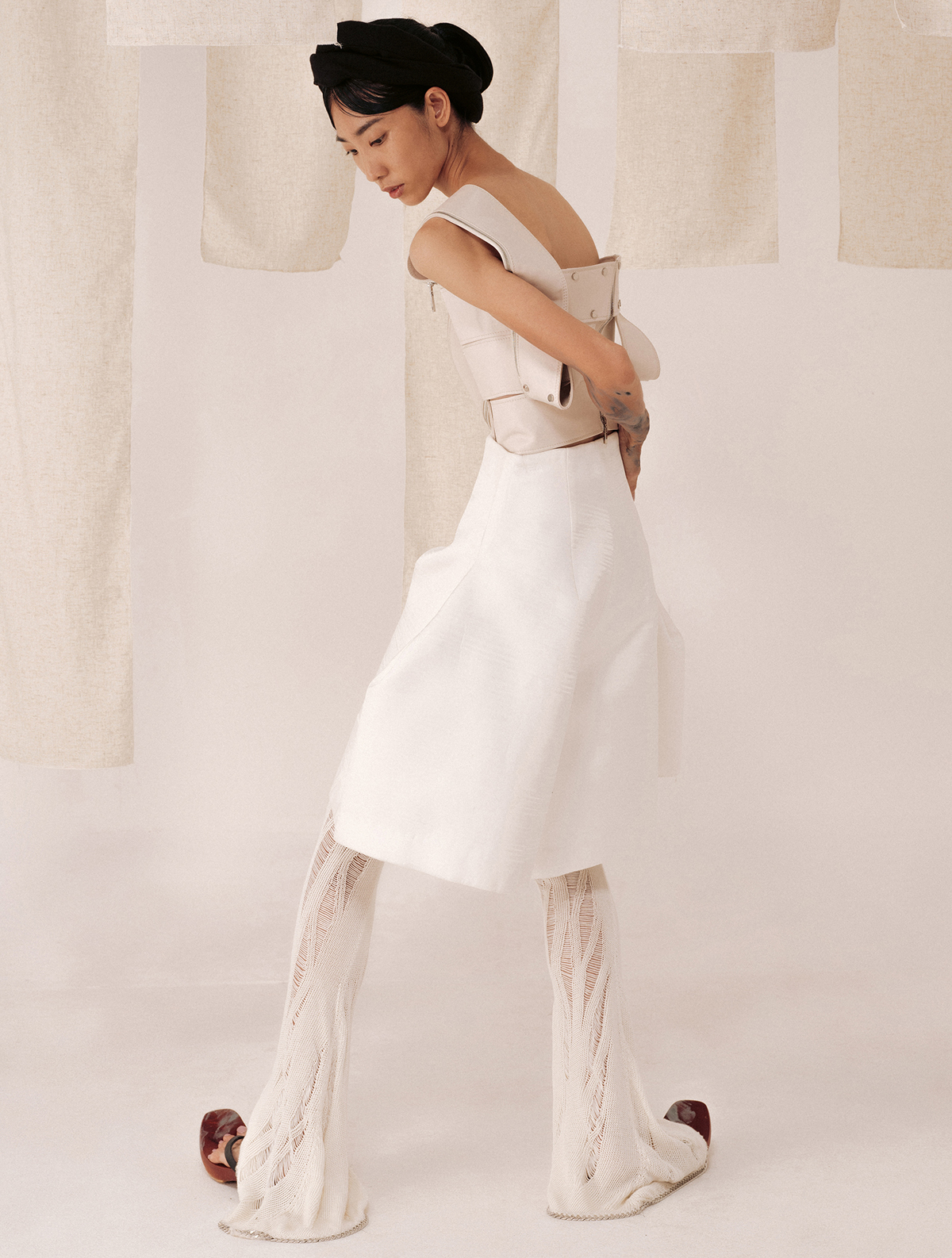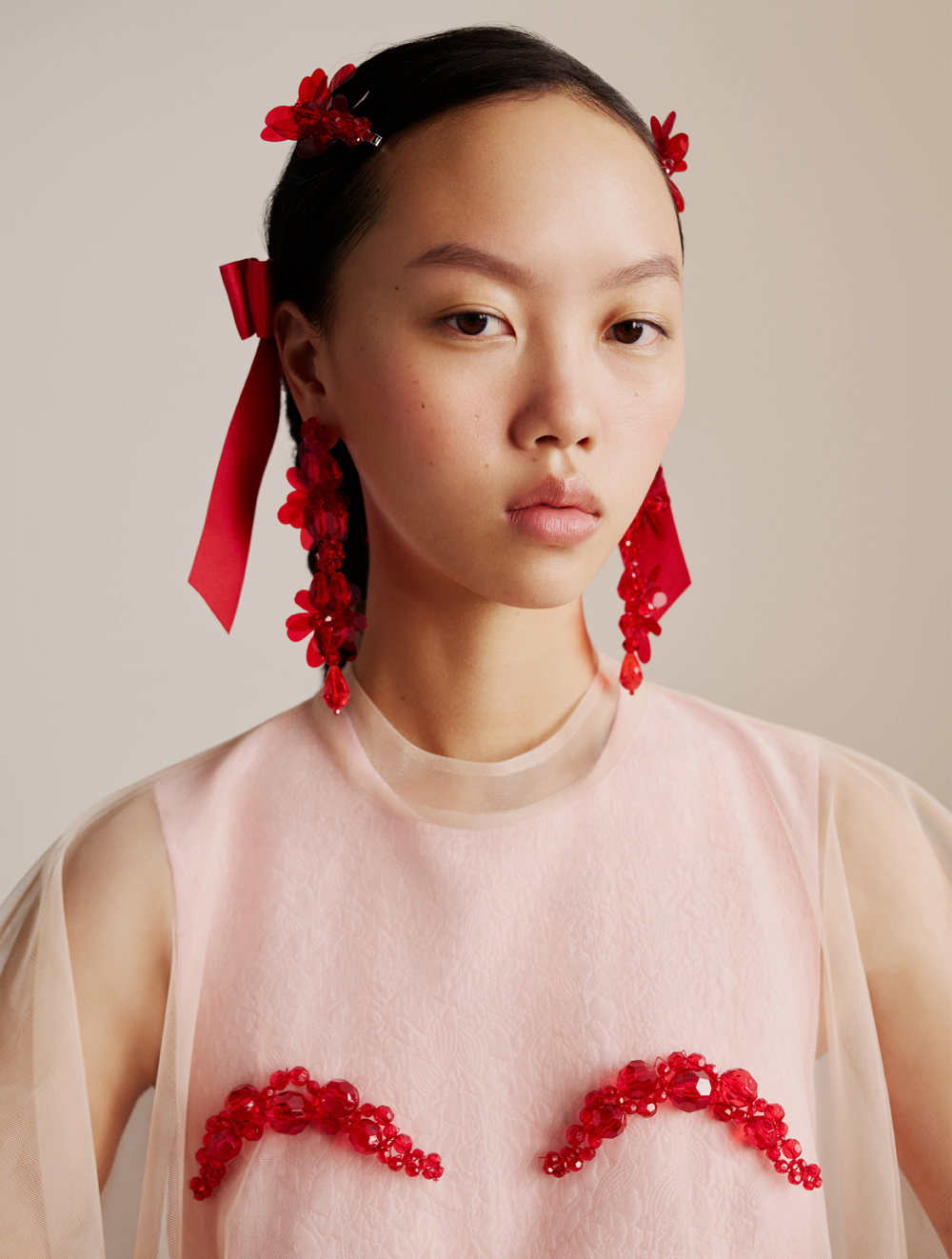Art by Anh Duong
Words by Ginger Rose Clark
Published on March 19, 2021
Share this :
Anh Duong talks to us about her rich and multifaceted career, her passion for self-expression, and her thoughts on the role the fashion industry still has to play in encouraging greater inclusivity.
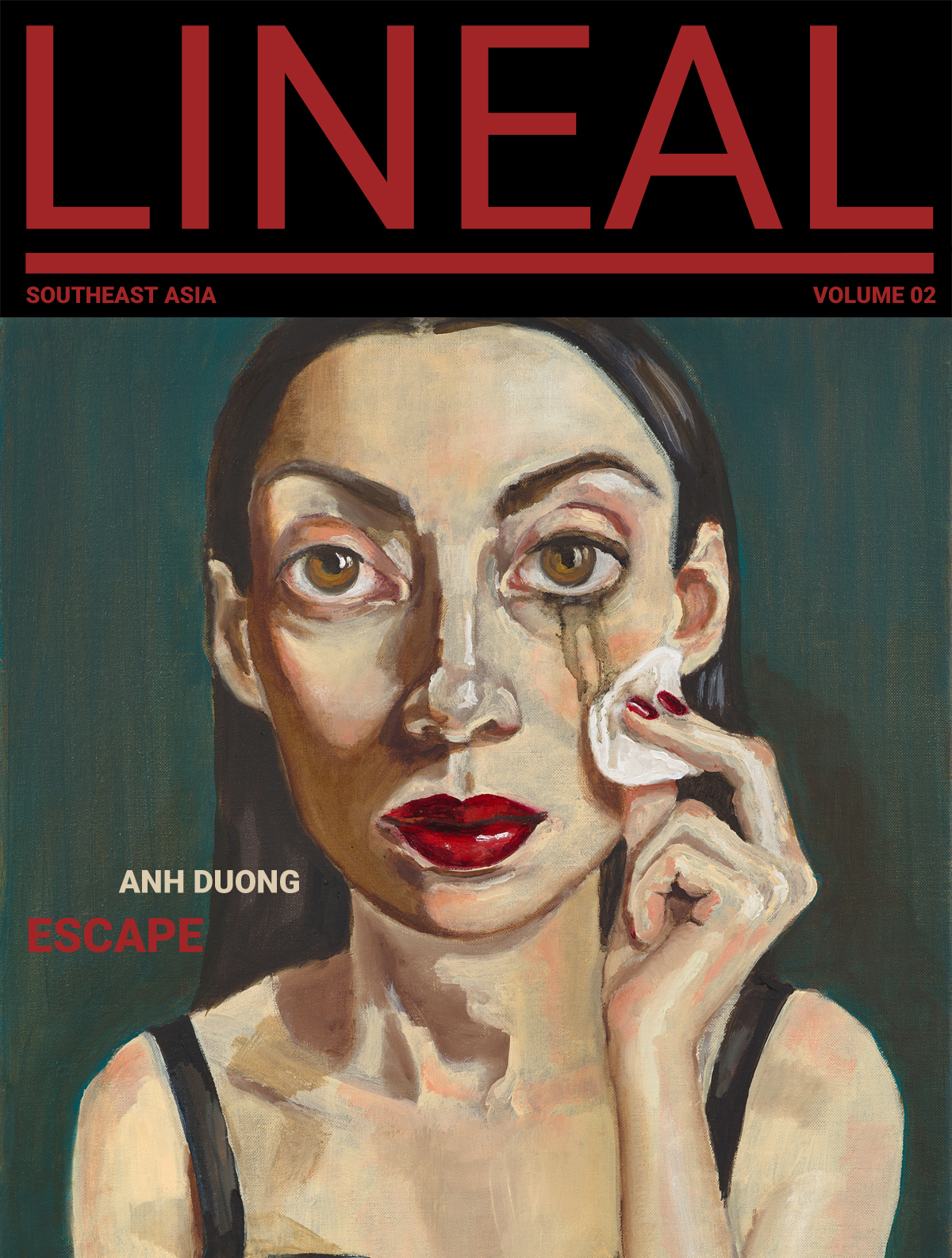
In one painting Anh Duong is applying lipstick; in another she is removing make-up. In this one she is staring into the viewer’s eyes pensively, in that one she is wearing an N95 mask. Elsewhere she sits legs hugged to her chest, wearing only a hat. These paintings, which have titles that are as enigmatic as they are poetic — La Trilogie de L’Absence or Schism of the Heart, for example — are just some of the many self-portraits Anh Duong has painted during her career as an artist. Right now, however, she is framed by a Zoom screen, serene, surrounded by an elegant décor: she is talking to me from New York, the city she moved to in her twenties, after having grown up in France, the daughter of Vietnamese and Spanish parents.
Anh Duong is a woman of many talents. She was a dancer in Paris when David Seidner discovered and photographed her for a Yves Saint Laurent campaign in 1986, kickstarting a successful modelling career. After moving to New York, she discovered her vocation as an artist. Besides self-portraits, which form a large part of her body of work, she has created portraits of Diane von Furstenberg, Susan Sarandon and Natalia Vodianova. Her work has been exhibited in high-profile art galleries worldwide and, in 2019, she was commissioned to work on the donor wall at the Statue of Liberty Museum. As a model, she has posed for the best fashion photographers and worked for some of the world’s most respected fashion houses, including, recently, Miu Miu.
Ginger Rose Clark: What are you working on at the moment?
Anh Duong: At the beginning of the pandemic, I was scheduled to have a huge show in Italy that I had been working on for four years. It was my biggest body of work ever. And then the pandemic happened and it got postponed. It was a real shock. Because I’d worked in such an intensive way for four years — I had been painting five days a week, nonstop — I really took advantage of what was happening. As an artist you create a lot and then, at the end of it, you need to get your inspiration back.
I got a commission for a very interesting project based on sculpture which was perfect because I couldn’t hold a brush anymore: I felt like I was completely empty. I’ve been commissioned to do the entrance wall of the new Vital Voices headquarters in Washington DC. It’s an amazing foundation for women. The wall is going to be 50 sculptures of the V of the Vital Voices as birds to symbolise how the foundation empowers women who have an idea or a small business to fly on their own.
Ginger: You were born to Vietnamese and Spanish parents and grew up in France – how has this heritage influenced you?
Anh: Growing up was a bit of a challenge because as a kid you always want to belong: you want to look like everybody else, you want to feel like everybody else. I think differences are something that we should embrace but it’s a challenge as a child.
I also think that you inherit your parents’ trauma and their history. In my case, my parents suffered a lot from racism and from being displaced as immigrants. My father was born in Saigon in the mid-30s, so he grew up during Indochina. It was a very challenging time. He rebelled against the notion of colonialism as a young man and one of the reasons he moved to France was because his parents were very concerned that he might end up in jail. He suffered from racism in his own country and then, when he moved to France as a young student, he also suffered from feeling displaced and from feeling very alone.
On my mother’s side, my grandfather fought against Spanish general Francisco Franco and fascism in the Spanish Civil War. As a result, when they lost the war, my grandmother had to move to France with her three children, including my mother.
So that’s a very heavy inheritance. I am very proud of it, but it took me a while to be able to assume it. At the same time, I grew up with incredible, beautiful things because both cultures have so much to give. I would not trade having this mix for anything.
Ginger: What is your relationship to your Vietnamese roots?
Anh: Growing up, my father was the only Vietnamese person around me. We never spoke Vietnamese at home and, unfortunately, I never learned Vietnamese. Nonetheless I think it’s in my DNA, no matter what.
My first encounter with Vietnam was in 1983. I went there with my father and my sister and it was one of the most emotional and beautiful trips of my life. I met my grandmother for the first time – she was blind unfortunately, but she was still very much together. It was an emotional trip again because it was everything that I had dreamed or imagined when I was growing up. The warmth of the people was unbelievable after all what they had been through, how welcoming they were and also how proud. As a young woman it was a huge lesson to see how they can take everything from you, your home, or worse, members of your family and yet you still have who you are: nobody can take that away from you.
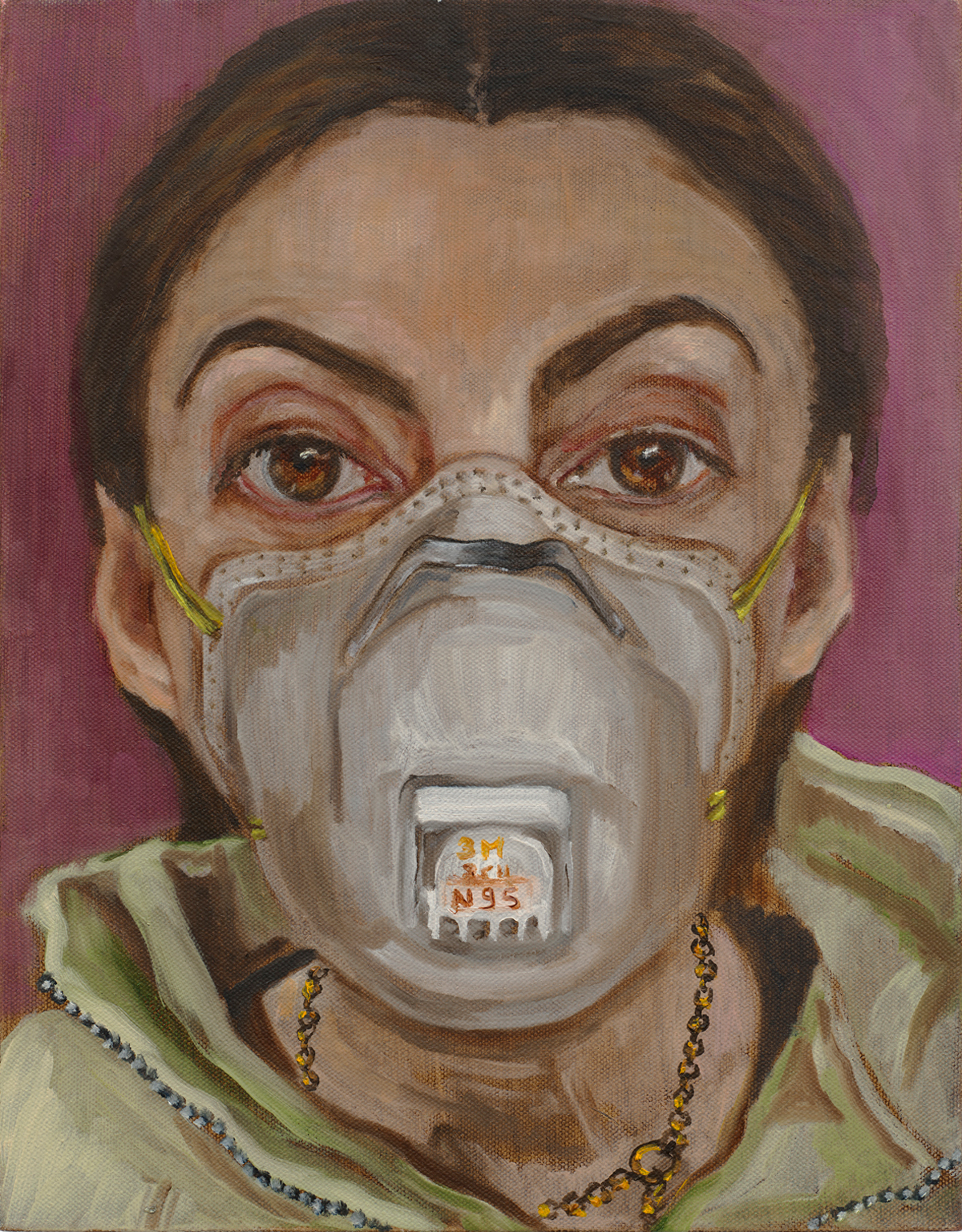
Ginger: You’ve been a dancer, model, muse and artist. How have you found your voice while navigating these different roles?
Anh: The need to express my voice has been the link throughout everything. As a child, I was timid and very introverted: the world was a scary place to express myself in so I started drawing. When you draw, it’s a dialogue that you create between the world and yourself and then you show your drawing to others and they have a response. That connection is very liberating.
Ginger: You began your career as an artist when spending a summer at Andy Warhol’s house in Montauk. Looking back, how do you remember this period of time?
Anh: I arrived in the States in the late 80s, when the art scene in New York was really exciting. I was in love with an artist and I was immersed in the artworld. I was very young, but thought I was too old to be a model so I was searching for my next career. When I encountered the artworld of New York, I realised it was a place where I wanted to express myself.
I started to make paintings in Montauk: I quit modelling and spent a whole summer there. When Bruno Bischofberger came that summer, he saw the paintings and started buying them and the people who were coming to visit my boyfriend started wanting to acquire my work so I decided to take a studio in the city, in the West Village. It just happened organically.
Ginger: Each time you start a new self-portrait, how do you choose the self that you want to portray?
Anh: I’m just an excuse to make a painting; I am not interested in painting myself. My whole life I’ve been a muse: for example, as a model I was the muse of the fashion designer, of the photographer. Then, when I came to be an artist, I was interested in painting the human form and painting from life but it was very frustrating because the people I was painting didn’t show up or were late. I got sick of it so I took a mirror: that is how I started [painting self-portraits].
Every shape of the face is an excuse for a brushstroke and the dialogue between the colours creates the form, the story, the feeling, and that’s what I’m interested in. When I used myself [as a model], it was about painting something that was always available and then, of course, it became much more than that: I realised it was a perfect vehicle to express inner feelings because self-portraits are about expressing my inner world and the emotions that I cannot say but need to put down on the canvas.
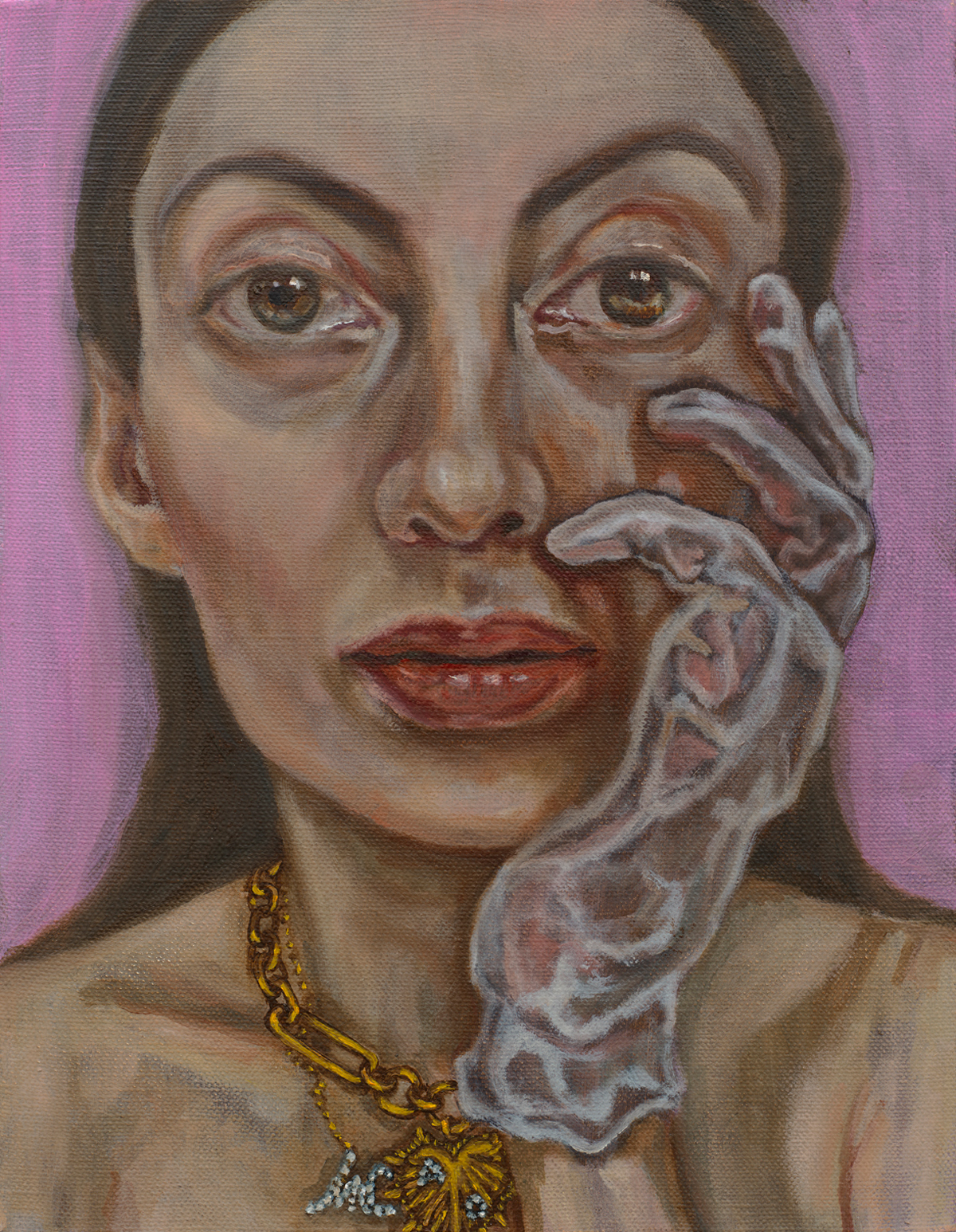
Ginger: Besides portraits and self-portraits, you also create wonderful still-life paintings. Do they require a different approach?
Anh: I see everything as a portrait: still-lifes are an extension of the self-portrait because they express feelings in the same way. Still-lifes explore our attachments to things and the emotions around these objects of desire. I am interested in the intimacy of things and how these objects portray me or others: they tell a story.
Ginger: What sensations do you feel when you are in front of a blank canvas?
Anh: One can be overwhelmed by its infinite possibilities and not knowing where to start. You have to dive into it and make your mark on it, not knowing where you will arrive but trusting it will bring you to a place you will recognise. Taking a leap of faith is necessary to be creative. The free flow of emotions, feelings, desires all come from a higher state far more intelligent than that of thinking. You have to tap into your subconscious.
I never start with the narrative: I let it come through paint. I like to start with the desire to paint a face, an object or an image of a dream and then the story will be told through each brushstroke.
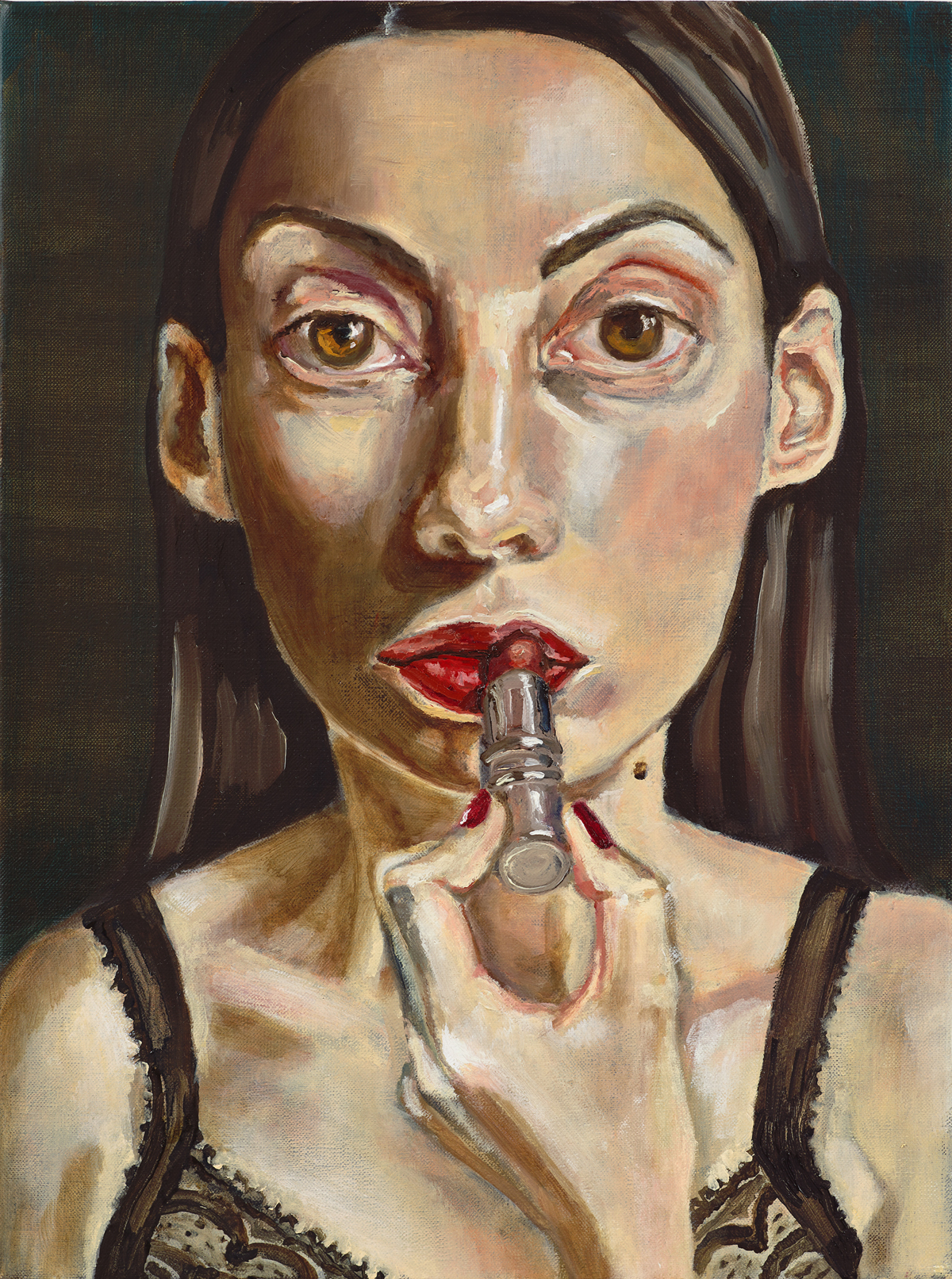
Ginger: You’ve come back to modelling at different stages in your life. How have you experienced the reconnection to fashion?
Anh: I retired from modelling aged 26, but the fashion world never left me, nor did my love for it. My second chapter with fashion came soon after my first solo exhibition at the Sperone Westwater gallery. Gap launched a ground-breaking campaign in which they were putting talent, rather than a model’s looks, at the forefront. Today it seems normal but at the time it was a very new concept and a big turning point. You could barely see the clothes: the focus was on my face, my name and my being an artist.
My third chapter came recently, when inclusivity of race and age finally became part of the conversation in fashion. I enjoy being a model now more than ever because it feels important to represent my age group. We have to stop shaming women for aging and fashion has the power to influence people’s minds on what is beautiful and desirable. It sometimes takes courage to be in front of the camera and bare a face with signs of age but it is my responsibility, as a woman at this stage of my life, to embrace it and own it. If I want to see the changes, I have to be the change and use that voice.
Ginger: One of your recent modelling jobs was for Peter Do, a New York-based fashion designer whose story you said (on Instagram) moved you for its similarity to your father’s. As a model who started in the industry when there was no diversity in fashion, how has it been to witness an increasing number of people from Asia and, in this case Vietnam, make a mark on the industry on a global scale?
Anh: This is the other reason why I am excited to model again: to be part of the change from racism.
Being mixed race can be complicated because you never know where you belong. I see it as a gift, especially in today’s climate where it’s not just about supporting your own community but supporting anti-violence anti-racism. I am heart broken to see the rise of violence and racism. You don’t have to be Black to support #blacklivesmatter or Asian to support #stopasianhate…We should all be concerned and united. We need to educate what racism truly is in all its forms.
I myself suffered from it in a subtle, yet dangerous way. As a model I was celebrated in so many publications and yet always labelled as exotic and special… which could be a nice way to say not accepted, not included, left behind or pushed aside. It is covert racism. As much as people declare their love story with Asia there is still a lot of prejudice…like in an abusive relationship.
When I read Peter’s Do story, I was very moved to see how he too suffered from being excluded and mocked for being different, so many years after my father’s own experiences. These stories are incredible stories and need to be told; diversity is bringing so much inspiration and new influences to fashion. Peter’s vision of women is very relevant today. It is not about projecting one’s own fantasy on a woman but to celebrate and empower her.
Ginger: With such deep connections to the fashion industry, you must understand the power of clothes as a form of expression – how does this come into play in your work?
Anh: People say that fashion is superficial but, to me, fashion always felt very revealing of people’s emotions. It shows how someone feels about themselves or how they wish to be portrayed and seen. It can be a window to their soul or a wall to hide behind: either way it is very powerful.
As a little girl I found comfort in dressing up. When the world felt chaotic around me, I would wear my beautiful ballet clothes and everything suddenly seemed safe and enchanted. Clothes bridged the gap between my fantasies and reality.
Naturally I started to incorporate clothes in my paintings as I felt they were part of my world and of the people’s I painted. Some of the greatest portraits are remembered through what the sitters are wearing. Think of the brush strokes of the white lace of the collars in Velasquez’s portraits: it’s as if King Philip IV were still breathing.
Ginger: What does ‘escape’ mean to you?
Anh: Escape is an internal journey, especially during this pandemic. It is the possibility to go inward and search for comfort and freedom inside of one’s self, instead of looking for outside satisfaction.
Share this :
Follow us :
ADVERTISEMENT
LATEST ARTICLE
Krerkburin Kernburi’s SurrealLand! Is A Series Of Extraordinary Photos Of Ordinary Days Of Our Lives
In Conversation: Lam Gia Khang Promotes Balance and Stillness Through Minimal Design
“Cham Community Project” – A Redemptive Celebration Of Muslim Community In Siem Reap
SIMILAR ARTICLES



